Menu


Hormones might seem mysterious for many of us, only popping into conversations when they are involved in health disturbances. We can all relate to the rollercoaster of changes during puberty – from battling pesky pimples to a rapid growth spurt. It could also be dealing with unexpected shifts in weight, messed-up sleep schedules, or mood swings that hit like a tidal wave. Having a good grasp of the basics of hormone imbalances can be advantageous when navigating these complexities, making life a bit more manageable.
It’s a complex topic so we will need your full attention!
We will first review the role of hormones in women’s bodies, how they can become unbalanced, and their effects. Then, we will dive into the natural herbs and functional mushrooms that can help bring them back into balance.
To get started we first need to understand what hormones are and how they work.
Hormones are chemical messengers that deliver vital instructions to all our organs and tissues, directing them to perform specific tasks to help maintain equilibrium (homeostasis) within the body. They orchestrate the body's responses to internal and external stimuli (triggers/cues) and are crucial in coordinating and controlling many physiological processes (1).
Hormones are produced by various specialized tissues/organs or glands and can affect change throughout the body via the bloodstream or in tissues/organs locally. For instance, the thyroid gland releases hormones that travel in the bloodstream to regulate energy production in every cell, while nitric oxide is produced locally in blood vessels and regulates blood pressure (1).
Many hormones operate under the control of natural rhythms or cycles. In other words, they operate the same as a thermostat controls an air-conditioner to maintain a constant room temperature. One example is the circadian rhythm, often regarded as the body's internal clock, where the hormones melatonin and cortisol work together with their diurnal rhythms to regulate the sleep-wake cycle (1).
Another example is the menstrual cycle, which acts as the primary controller of the female reproductive system, hormones including estrogen and progesterone ebb and flow to orchestrate the essential phases of this cycle (2).
Hormonal imbalances arise when there is an excess or deficiency of certain hormones or their activity is affected. Because the action of one hormone affects the relative activity of many others, chronic drivers of hormone imbalance can profoundly impact overall health and well-being (2).

In females, the effects of hormonal imbalances manifest in various ways, influencing not only the reproductive system but also mental, emotional, and metabolic health. Common symptoms encompass irregular or painful menstrual cycles, mood swings, fatigue, weight fluctuations, and sleep disruptions. Hormonal imbalances are not confined to a specific age group; they can occur at any stage, including puberty, pregnancy, the reproductive years, and menopause (3).
While it’s true that hormone imbalance is commonly associated with either excess or deficiency, it’s more complicated than that. Let’s look at some of the ways hormones can become imbalanced in women and the impacts that have on health.
Cortisol plays a pivotal role in a healthy stress response, broadly influencing many aspects of physiology:
While these effects benefit acute stress, chronic stress can lead to excess cortisol. Ultimately, excess cortisol can negatively impact mood, menstrual cycles, appetite, blood pressure, body weight, metabolism, and immune function. Conversely, a situation of low cortisol introduces a distinct set of risk factors (1).

Reproductive hormones work in synchrony, illustrated by the menstrual cycle. This intricate dance is regulated by hormonally controlled feedback loops (remember the thermostat analogy). Generally, when one hormone rises, it relays information that inhibits the production of its partner hormone. Estrogen collaborates with luteinizing hormone (LH), progesterone with follicle-stimulating hormone (FSH), and prolactin with dopamine.
Chronic stress, significant changes in weight, and thyroid disorders are common factors that can disrupt these partnerships, throwing off the delicate hormonal balance (2).
The brain’s hypothalamus and pituitary glands act as a central hub, managing multiple hormonal feedback loops and influencing various hormone-producing organs and tissues. This region controls the release of LH and FSH, regulating much of the menstrual cycle and fertility. It also controls hormones affecting growth and repair, thyroid function, metabolism, stress, blood pressure, and more.
If one function is pushed into overdrive, usually due to stress, the others can suffer. For instance, high cortisol levels due to significant stress or poor sleep quality may interfere with the menstrual cycle by decreasing LH, which impacts progesterone production (1).
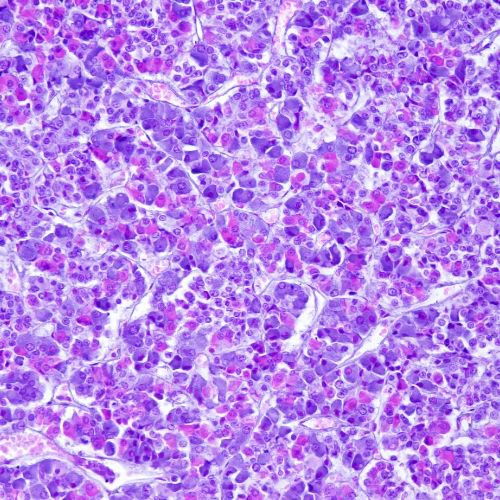
The process of deactivating and removing hormones from circulation once their tasks are complete is crucial for hormonal balance, especially for women. Most estrogen is broken down in the liver and excreted through the gastrointestinal tract. Maintaining a healthy liver and gastrointestinal function is essential. Gut microbiota, lack of fiber in the diet, and constipation can hinder estrogen elimination, leading to resorption and increased levels in the body.
Effective distribution of hormones to their target organs/tissues is another influence on hormone balance. Many hormones, including estrogen, testosterone, thyroid hormones, and cortisol, are not soluble in blood and are moved around by specific transporters acting like ships transporting cargo. Too few or too many transporters can produce an imbalance in hormonal activity.
Hormones are messengers and messages need both a sender and a receiver to function. This means that the circulating hormones themselves are only part of the story as the receivers (cell receptors) also need to be functioning adequately to act on the message. The hormone insulin, responsible for regulating blood sugar, serves as an example. If its receptors are inactive or resistant, the hormonal message cannot be delivered effectively.
Identifying the root causes of hormonal imbalances is crucial for developing effective support strategies to restore equilibrium. Various factors contribute to hormonal disruptions, including, family history and genetics, early life history, age, lifestyle choices, environmental influences, underlying medical conditions, and medications.
Every individual will have a unique story to tell and the most effective support will address all the relevant causes.
Female hormonal imbalances can be identified through a variety of symptoms, affecting different aspects of physical, emotional, and reproductive health.
It's important to note that experiencing one or more symptoms does not necessarily indicate a hormonal imbalance, as they can be attributed to various factors. However, persistent, or severe symptoms should prompt a consultation with a healthcare professional.
Common symptoms of hormonal imbalance in females include:
These symptoms will vary in intensity and may be interconnected. Consultation with a healthcare professional is crucial for accurate diagnosis and the development of an appropriate treatment plan tailored to individual needs (3).
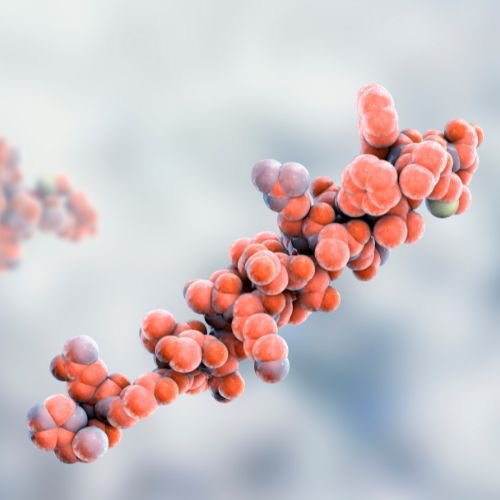
Women’s history in virtually every culture is intimately linked to the use of herbs and the healing arts (4). This accumulated knowledge has been passed down and refined through the generations. Today, with the added benefit of modern science and research including clinical trials, herbal approaches provide natural, safe, and effective options to address a broad range of female hormonal imbalances.
The body knows what to do given the right conditions. Consider herbs and functional mushrooms, with their complex natural chemistry, as gently nudging your body toward self-correction and balance.
It takes time to alter the activity of feedback loops, receptor expression, and the governing epigenetic factors that drive these imbalances. However, with ongoing exposure to the right nudges, the body will eventually respond.
Consider sugar intake and insulin resistance. It takes a considerable period of sustained high-sugar intake before the body responds with progressive levels of insulin resistance. Likewise, the body needs exposure to the right nudging chemicals for some time before insulin functionality can return. This goes for any hormonal disturbance.
A well-developed herbal and functional mushroom support program for managing female hormonal imbalances should ideally address the key causes as previously discussed. Additionally, a key focus should be on supporting the underlying functional rhythms of the hormonal cycles.
Don’t expect miracles! When using functional mushrooms and herbs for hormone balance, significant change is not likely to occur quickly. Each case may be different but a good rule of thumb is to allow 3 to 4 months.
Herbs can affect hormone levels directly and indirectly, via a multitude of possible pathways. Their complex chemistry can work on multiple aspects of hormonal balance simultaneously, gently nudging and training the body toward balance again.
Mushrooms generally lack a strong tradition of supporting female hormonal health. If we look at the bulk of traditional evidence, it is firmly with herbs. However, that doesn’t mean mushrooms don’t play a role, it’s just more of a supportive and indirect role.
Mushrooms have special health benefits due to their fungal chemistry, which is quite different to plants. Some of these benefits are generally applicable to all functional mushrooms, including their positive effects on immunity, gastrointestinal microbiota health, and metabolism. The gut microbiota has always been a key focus of traditional systems when supporting female health.
Mushrooms are rich in prebiotic fibers, particularly β-glucans (beta-glucans) and chitin. Emerging research suggests they feed important gut bacterial groups, improving their populations and increasing their production of metabolites that profoundly influence our health, particularly metabolically. Importantly, a healthy microbiota can produce phytoestrogenic metabolites from dietary fibers, flaxseeds, sesame seeds, whole grains, and soy that are effective modulators of healthy estrogen signaling.
Collectively, these changes support healthy hormonal balance via multiple mechanisms including healthy estrogen metabolism, regulation of cortisol, regulation of appetite and body weight inflammation regulation, insulin sensitivity, gut-brain axis neurotransmitter production (GABA and serotonin), and more.
Modern researchers speculate that one causative factor in hormonal dysregulation is diet. The modern diet is much lower in phytoestrogen precursors and/or the modern gut is lacking in the necessary bacteria to use them. Therefore, increasing any mushroom intake is an ideal option to support these issues, as they contain valuable gut-supporting molecules.
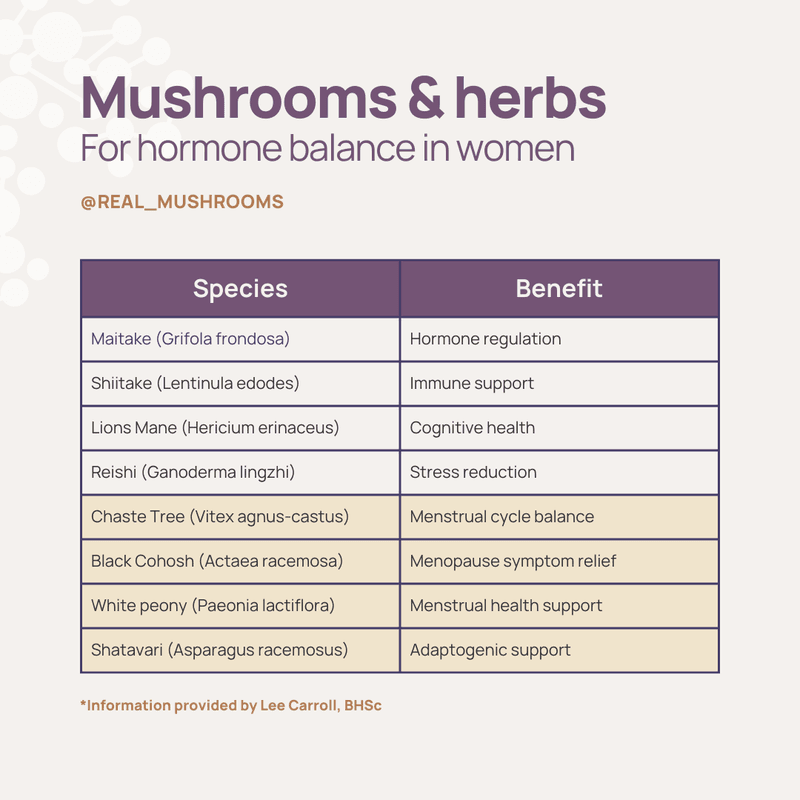
The ripe berries of chaste trees have long been distinguished for their impact on female hormonal health. The ancient Greeks recognized its value in this regard, treating menstrual cycle and menopausal symptoms with it. Interestingly, it was also utilized (particularly by male monks) to reduce libido.
It remains a stand-out herb to support reproductive function in women to this day.
Chaste tree is one of the ideal herbs for hormone balance because it supports several functions:
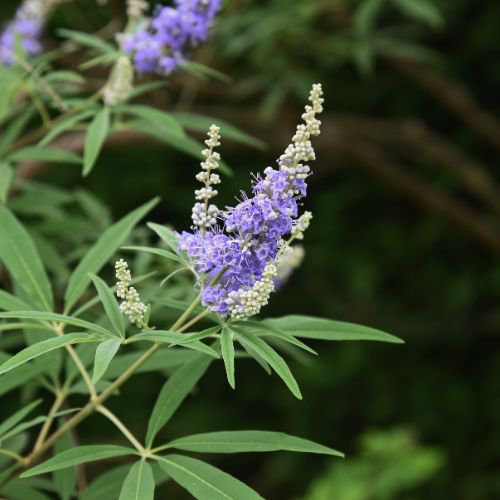
Black Cohosh is native to North America and produces a rhizome traditionally used to address hormonal issues in women. These issues include painful menstruation, muscular aches, and headaches. It is used today to benefit many gynecological conditions, particularly to ease symptoms of menopause. In fact, it is considered a non-estrogenic alternative to hormone replacement therapy (6).
Beyond modulation of female hormones, it helps maintain bone density in menopausal women, and regulate blood sugar too (7).
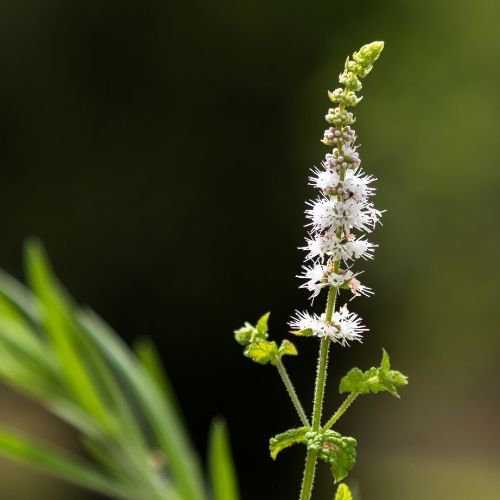
White peony root is renowned in Traditional Chinese Medicine (TCM) for its ability to support women’s general well-being and balance female hormones, support the functioning of the upper female reproductive tract, and ease the temporary feelings of tension associated with the menstrual cycle. It is commonly combined with other herbs to support a wide range of female hormonal challenges (8).

There are certain herbs for hormone balance that are classified as adaptogens. An adaptogen is strictly a substance that increases the body’s capacity to resist the impact of stressors (be they environmental, physical or emotional).
Several adaptogenic herbs specifically help to regulate the HPA axis in cases where chronic stress hormone production is impacting negatively on the body. The term is not widely understood, and today we see it applied almost randomly to any herb that affects energy, hormones, and stress.
Examples of true adaptogen herbs include eleuthero (Eleutherococcus senticosus), rhodiola (Rhodiola rosea), schisandra (Schisandra chinensis), shatavari (Asparagus racemosus), and ashwagandha (Withania somnifera). Each has its own special attributes, so the selection of an appropriate adaptogen for an individual can give more complete results (9).
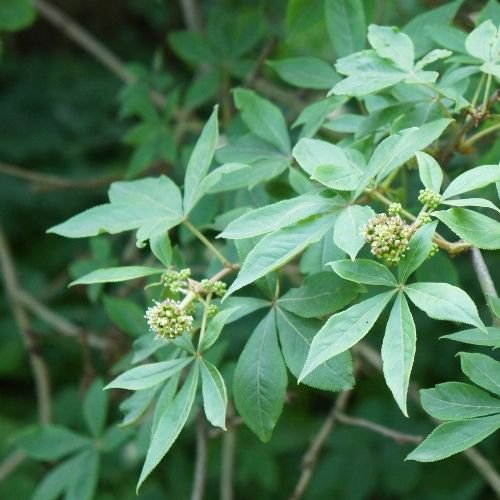
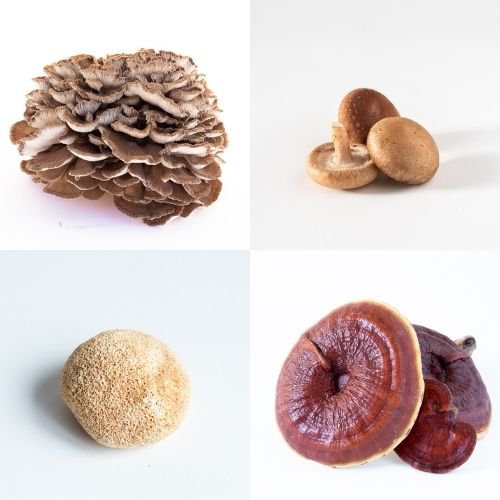
Maitake is a delicious edible and medicinal mushroom with a history of therapeutic use dating back at least 1,800 years. It was valued to revive low energy (qi), protect the stomach and liver, and soothe nervousness, amongst other uses. An ancient Chinese medical text states that it can slow aging and make the body light. These uses might reflect the modern understanding of maitake’s effects on balancing blood sugar and quenching oxidative stress.
Little research has been done to date to support these traditional concepts. However, maitake does have exciting research specific to female hormonal health. Two clinical trials demonstrate solid improvements to fertility in anovulatory women due to polycystic ovarian syndrome (PCOS, a complex disorder involving reproductive hormone disturbances and insulin resistance).
The researchers of these two studies administered a maitake β-glucan extract (SX-fraction) known to excel at blood sugar regulation. The women who took the maitake extract showed an improved ratio of testosterone to estrogen, allowing ovulation. In the end, the researchers found that the maitake extract was more effective than a classic TCM combination (licorice and paeony), equally effective as conventional therapy, and further, increased its effectiveness (10,11). A pilot study initially indicated SX-fraction could regulate disturbed blood sugar metabolism (12).
The effectiveness of a β-glucan extract on metabolism suggests it likely works as a prebiotic. Maitake is claimed to have “high levels” of isoflavones (converted by the gut microbiota to phytoestrogens that could be assisting hormonal imbalances). However, as yet there are no studies to confirm this action (13).
Animal studies show that maitake also can prevent bone loss, which it may do best in combination with shiitake (14).
You can purchase a high-quality maitake extract in capsule or powder form from Real Mushrooms.
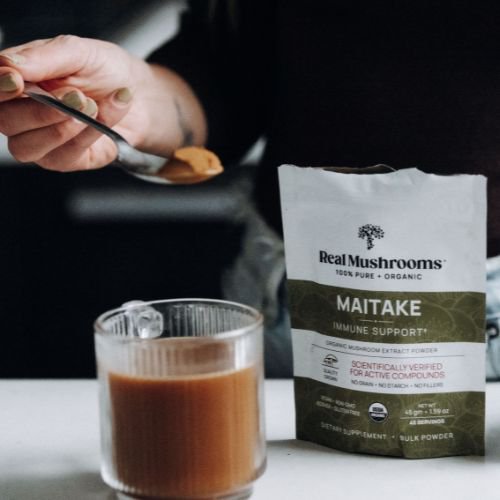
Shiitake is not just a delicious edible; it has traditional medicinal use in East Asia dating back around 5,000 years. Apart from its now famed immunological properties (15-17), shiitake was used for cardiovascular, metabolic, and liver health, and for support in cases of pain/fatigue/weakness, particularly associated with aging.
Shiitake may have more specific relevance to female hormonal health, as it was traditionally used for sexual dysfunction as well. However, not much has been revealed in modern research to support this yet.
A large part of shiitake’s effects probably come via prebiotic activity in the gastrointestinal tract (GIT). Researchers have identified that shiitake can shift colonic microbe populations toward a healthier balance within two months. The study in question may not have been designed to adequately see statistical changes in cholesterol levels of the population who had mildly raised cholesterol. However, the microbiota changes were correlated with improved cholesterol metabolism (18).
Shiitake’s effects on metabolism are an important aspect of hormonal health. A recent clinical trial has shown some advantage for managing fat metabolism, and supporting cardiometabolic health benefits (19). Preclinical work indicates shiitake can improve the health of the liver as well as fat and cholesterol metabolism. Fat and cholesterol metabolism are interrelated and are primarily regulated in the liver. Cholesterol is the building block of reproductive hormones, therefore regulation of its metabolism can assist with managing reproductive hormone levels.
Animal studies also indicate shiitake supports bone health/density. Shiitake is unique in that it prevents bone loss and also promotes increased bone density (14).
Historically in Asia, lion’s mane mushroom was thought of as a tonic to impart vigour and strength. It was used to support the major organs and particularly to heal the GIT.
Lion’s mane’s most well-known effects today, however, involve protecting the brain, improving cognitive function/memory, mood, and possibly sleep quality. Poor cognition (“brain fog”) and mood disturbances are common with hormonal imbalances which may be most apparent for women pre-menstrually or with the onset of menopause.
Researchers conducting clinical trials have identified that lion’s mane can improve irritability and mood, as well as cognitive function (20,21). One study of women with menopausal symptoms found that lion’s mane improved mood and concentration after four weeks. Though it failed to show sleep or menopausal symptom adjustments, this is likely related to the inadequacy of the timeframe (22).
Today we appreciate that mental health can be influenced by the GIT, as the brain and gut microbiota communicate with chemicals via the gut-brain axis. Lion's mane demonstrates significant positive effects on both brain and gut health, making it a particularly beneficial supplement for overall well-being. A small pilot study has recently examined lion’s mane for gut health, and it found significant prebiotic activity, detectable within a matter of days to weeks (23).
Long prized as one of the best functional mushrooms to support longevity, the traditional uses of reishi were incredibly broad and suggestive of a panacea. Modern research in humans has not always supported the reputation suggested by tradition. However, some of the limitations with clinical trials, availability of special extracts, short time frames, cohorts too healthy to achieve dramatic change, and more have impacted the outcomes of reishi studies.
Importantly, however, reishi is primarily a tonic; it needs to be a lifestyle choice consumed regularly. Its benefits and protective effects build over time, likely measured in years not weeks or months. Acute effects do not seem to be its speciality. Much of its activity is likely driven indirectly, via protection against oxidative stress and prebiotically. Reishi stands out as a supportive tonic that is likely to help maintain hormonal harmony into older age, particularly.
*Reishi has developed a reputation for being the ultimate sleep-enhancing mushroom, and while tradition indicates it can help here, there is very scant evidence currently of this activity. Improvements to sleep are likely to be an indirect response to prebiotic effects on the gut-brain axis.

A mushroom omelet for a healthy hormonal start to the day!
Slice a few mushrooms of your choice, and gently fry in some olive oil, under a lid. It doesn’t have to be an exotic edible, button and portabella mushrooms are highly beneficial too.
Meanwhile, crack 2 eggs into a bowl and add ¼ to ½ metric teaspoon each of Real Mushrooms Maitake powder and Lion’s Mane powder and whisk together. Add salt and pepper to taste, and if you are in the mood, add some finely chopped fresh herbs.
Once the mushrooms are cooked, pour over the egg mixture and cook to your preferred texture. Fold the omelet in half before serving to amplify the visual appeal!
Enjoy!

The journey through understanding hormones and their impact on our health is both fascinating and crucial for maintaining our well-being. From the hormonal rollercoaster of puberty to the nuanced imbalances that can affect us at various stages of life, this post has illuminated the significant role hormones play in our bodies.
Highlighting the benefits of natural remedies, such as functional mushrooms and herbs, offers a hopeful perspective toward achieving hormonal balance. Armed with this knowledge, we can approach our health proactively, understanding that while the path to balance may require patience and persistence, the rewards of harmony and improved health are well worth the effort.
Consider exploring the lineup of high-quality mushroom supplements on offer by Real Mushrooms. Finding quality herbal products with a female hormonal focus can be a challenge. Gaia Herbs is a reputable brand that is worthy of consideration.
As we embrace the wisdom of both modern science and traditional practices, let's empower ourselves to make informed choices for our hormonal health, ensuring a more balanced and vibrant life.

1. Tortora, G. J., & Derrickson, B. H. (2008). Principles of Anatomy and Physiology (12th ed. pp. 643-677). John Wiley and Sons, Inc.
2. Trickey, R., & Mikosza, S. (2011b). Hormones. In R. Trickey (Ed.), Women, Hormones, & the Menstrual Cycle (3rd ed., pp. 37–53). Trickey Enterprises.
3. Trickey, R., & Mikosza, S. (2011a). Hormonal Imbalance. In R. Trickey (Ed.), Women, Hormones, & the Menstrual Cycle (3rd ed., pp. 54–74). Trickey Enterprises.
4. Romm, A. (2010). Botanical Medicine for Women’s Health (pp. 100-105). Churchill Livingstone Elsevier.
5. Kamal, N., Mio Asni, N. S., Rozlan, I. N. A., Mohd Azmi, M. A. H., Mazlan, N. W., Mediani, A., Baharum, S. N., Latip, J., Assaw, S., & Edrada-Ebel, R. A. (2022). Traditional Medicinal Uses, Phytochemistry, Biological Properties, and Health Applications of Vitex sp. Plants, 11(15), 1944. https://doi.org/10.3390/plants11151944.
6. Wuttke, W., & Seidlová-Wuttke, D. (2015). Black cohosh (Cimicifuga racemosa) is a non-estrogenic alternative to hormone replacement therapy. Clinical Phytoscience, 1(1), 12. https://doi.org/10.1186/s40816-015-0013-0.
7. Salari, S., Amiri, M. S., Ramezani, M., Moghadam, A. T., Elyasi, S., Sahebkar, A., & Emami, S. A. (2021). Ethnobotany, Phytochemistry, Traditional and Modern Uses of Actaea racemosa L. (Black cohosh): A Review. In G. E. Barreto & S. Amirhossein (Eds.), Pharmacological Properties of Plant-Derived Natural Products and Implications for Human Health (pp. 403–449). Springer Nature Switzerland AG. https://doi.org/10.1007/978-3-030-64872-5_24.
8. Moini Jazani, A., Hamdi, K., Tansaz, M., Nazemiyeh, H., Sadeghi Bazargani, H., Fazljou, S. M. B., & Nasimi Doost Azgomi, R. (2018). Herbal Medicine for Oligomenorrhea and Amenorrhea: A Systematic Review of Ancient and Conventional Medicine. BioMed Research International, 2018, 1–22. https://doi.org/10.1155/2018/3052768.
9. Panossian, A. G., Efferth, T., Shikov, A. N., Pozharitskaya, O. N., Kuchta, K., Mukherjee, P. K., Banerjee, S., Heinrich, M., Wu, W., Guo, D., & Wagner, H. (2021). Evolution of the adaptogenic concept from traditional use to medical systems: Pharmacology of stress‐ and aging‐related diseases. Medicinal Research Reviews, 41(1), 630–703. https://doi.org/10.1002/med.21743.
10. Tominaga, K., Tsuchida, M., Hayashi, M., Asahi, A., & Inui, H. (2011). Ovulatory effects of an extract from Maitake mushroom in patients with polycystic ovary syndrome. Journal of Reproduction Engineering, 14, 7–12.
11. Chen, J. T., Tominaga, K., Sato, Y., Anzai, H., & Matsuoka, R. (2010). Maitake mushroom (Grifola frondosa) extract induces ovulation in patients with polycystic ovary syndrome: A possible monotherapy and a combination therapy after failure with first-line clomiphene citrate. Journal of Alternative and Complementary Medicine, 16(12), 1295–1299. https://doi.org/10.1089/acm.2009.0696.
12. Konno, S., Tortorelis, D., Fullerton, S., Samadi, A., Hettiarachchi, J., & Tazaki, H. (2001). A possible hypoglycaemic effect of maitake mushroom on Type 2 diabetic patients. Diabetic Medicine, 18(12), 1010. https://doi.org/10.1046/j.1464-5491.2001.00532.x.
13. Rossi, P., Difrancia, R., Quagliariello, V., Savino, E., Tralongo, P., Randazzo, C. L., & Berretta, M. (2018). B-glucans from Grifola frondosa and Ganoderma lucidum in breast cancer: An example of complementary and integrative medicine. Oncotarget, 9(37), 24837–24856. https://doi.org/10.18632/oncotarget.24984.
14. Erjavec, I., Brkljacic, J., Vukicevic, S., Jakopovic, B., & Jakopovich, I. (2016). Mushroom extracts decrease bone resorption and improve bone formation. International Journal of Medicinal Mushrooms, 18(7), 559–569. https://doi.org/10.1615/IntJMedMushrooms.v18.i7.10.
15. Dai, X., Stanilka, J. M., Rowe, C. A., Esteves, E. A., Nieves, C., Spaiser, S. J., Christman, M. C., Langkamp-Henken, B., & Percival, S. S. (2015). Consuming Lentinula edodes (Shiitake) Mushrooms Daily Improves Human Immunity: A Randomized Dietary Intervention in Healthy Young Adults. Journal of the American College of Nutrition, 34(6), 478–487. https://doi.org/10.1080/07315724.2014.950391.
16. Gaullier, J. M., Sleboda, J., Øfjord, E. S., Ulvestad, E., Nurminiemi, M., Moe, C., Albrektsen, T., & Gudmundsen, O. (2011). Supplementation with a soluble beta-glucan exported from Shiitake Medicinal Mushroom, Lentinus edodes (Berk.) Singer Mycelium: A crossover, placebo-controlled study in healthy elderly. International Journal of Medicinal Mushrooms, 13(4), 319–326. https://doi.org/10.1615/IntJMedMushr.v13.i4.10
17. Gordon, M., Bihari, B., Goosby, E., Gorter, R., Greco, M., Guralnik, M., Mimura, T., Rudinicki, V., Wong, R., & Kaneko, Y. (1998). A placebo-controlled trial of the immune modulator, lentinan, in HIV-positive patients: a phase I/II trial. Journal of Medicine, 29(5–6), 305–330.
18. Morales, D., Shetty, S. A., López-Plaza, B., Gómez-Candela, C., Smidt, H., Marín, F. R., & Soler-Rivas, C. (2021). Modulation of human intestinal microbiota in a clinical trial by consumption of a β-D-glucan-enriched extract obtained from Lentinula edodes. European Journal of Nutrition, 60(6), 3249–3265. https://doi.org/10.1007/S00394-021-02504-4
19. Spim, S. R. V., Pistila, A. M. H., Pickler, T. B., Silva, M. T., & Grotto, D. (2021). Effects of Shiitake Culinary-Medicinal Mushroom, Lentinus edodes (Agaricomycetes), Bars on Lipid and Antioxidant Profiles in Individuals with Borderline High Cholesterol: A Double-Blind Randomized Clinical Trial. International Journal of Medicinal Mushrooms, 23(7), 1–12. https://doi.org/10.1615/INTJMEDMUSHROOMS.2021038773.
20. Vigna, L., Morelli, F., Agnelli, G. M., Napolitano, F., Ratto, D., Occhinegro, A., Di Iorio, C., Savino, E., Girometta, C., Brandalise, F., & Rossi, P. (2019). Hericium erinaceus Improves Mood and Sleep Disorders in Patients Affected by Overweight or Obesity: Could Circulating Pro-BDNF and BDNF Be Potential Biomarkers? Evidence-Based Complementary and Alternative Medicine, 2019. https://doi.org/10.1155/2019/7861297.
21. Okamura, H., Anno, N., Tsuda, A., Inokuchi, T., Uchimura, N., & Inanaga, K. (2015). The effects of Hericium erinaceus (Amyloban® 3399) on sleep quality and subjective well-being among female undergraduate students: A pilot study. Personalized Medicine Universe, 4, 76–78. https://doi.org/10.1016/j.pmu.2015.03.006.
22. Nagano, M., Shimizu, K., Kondo, R., Hayashi, C., Sato, D., Kitagawa, K., & Ohnuki, K. (2010). Reduction of depression and anxiety by 4 weeks Hericium erinaceus intake. Biomedical Research, 31(4), 231–237. https://doi.org/10.2220/biomedres.31.231
23. Xie, X. Q., Geng, Y., Guan, Q., Ren, Y., Guo, L., Lv, Q., Lu, Z. M., Shi, J. S., & Xu, Z. H. (2021). Influence of short-term consumption of Hericium erinaceus on serum biochemical markers and the changes of the gut microbiota: A pilot study. Nutrients, 13(3), 1–12. https://doi.org/10.3390/nu13031008.
24. Chu, T. T. W., Benzie, I. F. F., Lam, C. W. K., Fok, B. S. P., Lee, K. K. C., & Tomlinson, B. (2012). Study of potential cardioprotective effects of Ganoderma lucidum (Lingzhi): results of a controlled human intervention trial. The British Journal of Nutrition, 107(7), 1017–1027. https://doi.org/10.1017/S0007114511003795
25. Chen, S.-N., Nan, F.-H., Liu, M.-W., Yang, M.-F., Chang, Y.-C., & Chen, S. (2023). Evaluation of Immune Modulation by β-1,3; 1,6 D-Glucan Derived from Ganoderma lucidum in Healthy Adult Volunteers, A Randomized Controlled Trial. Foods, 12(3), 659. https://doi.org/10.3390/foods12030659.
26. Al-Jumaili, M. M. O., Al-Dulaimi, F. K. Y., & Ajeel, M. A. (2020). The role of Ganoderma lucidum uptake on some hematological and immunological response in patients with coronavirus (COVID-19). Systematic Reviews in Pharmacy, 11(8), 537–541. https://doi.org/10.31838/srp.2020.8.76.
27. Henao, S. L. D., Urrego, S. A., Cano, A. M., & Higuita, E. A. (2018). Randomized clinical trial for the evaluation of immune modulation by yogurt enriched with β-glucans from lingzhi or reishi medicinal mushroom, Ganoderma lucidum (Agaricomycetes), in children from Medellín, Colombia. International Journal of Medicinal Mushrooms, 20(8), 705–716. https://doi.org/10.1615/IntJMedMushrooms.2018026986.
28. Gao, Y., Chen, G., Dai, X., Ye, J., & Zhou, S. (2004). A Phase I/II Study of Ling Zhi Mushroom Ganoderma lucidum (W.Curt.:Fr.) Lloyd (Aphyllophoromycetideae) Extract in Patients with Coronary Heart Disease. International Journal of Medicinal Mushrooms, 6(4), 327–334. https://doi.org/10.1615/INTJMEDMUSHR.V6.I4.30.
29. Jin, H., Zhang, G., Cao, X., Zhang, M., Long, J., Luo, B., Chen, H., Qian, S., Mori, M., & Wang, Z. (1996). Treatment of hypertension by ling zhi combined with hypotensor and its effects on arterial, arteriolar and capillary pressure and microcirculation. Microcirculatory Approach to Asian Traditional Medicine, 131–138.
30. Kanmatsuse, K., Kajiwara, N., Hayashi, K., Shimogaichi, S., Fukinbara, I., Ishikawa, H., & Tamura, T. (1985). [Studies on Ganoderma lucidum. I. Efficacy against hypertension and side effects]. Yakugaku Zasshi : Journal of the Pharmaceutical Society of Japan, 105(10), 942–947. https://doi.org/10.1248/YAKUSHI1947.105.10_942
31. Pazzi, F., Adsuar, J. C., Domínguez-Muñoz, F. J., García-Gordillo, M. A., Gusi, N., & Collado-Mateo, D. (2020). Ganoderma lucidum effects on mood and health-related quality of life in women with fibromyalgia. Healthcare (Switzerland), 8(4), 1–11. https://doi.org/10.3390/healthcare8040520.
Disclaimer: The information or products mentioned in this article are provided as information resources only, and are not to be used or relied on to diagnose, treat, cure, or prevent any disease. This information does not create any patient-doctor relationship, and should not be used as a substitute for professional diagnosis and treatment. The information is intended for health care professionals only. The statements made in this article have not been evaluated by the Food and Drug Administration. Any products mentioned are not intended to diagnose, treat, cure, or prevent any disease. The information in this article is intended for educational purposes. The information is not intended to replace medical advice offered by licensed medical physicians. Please consult your doctor or health practitioner for any medical advice.